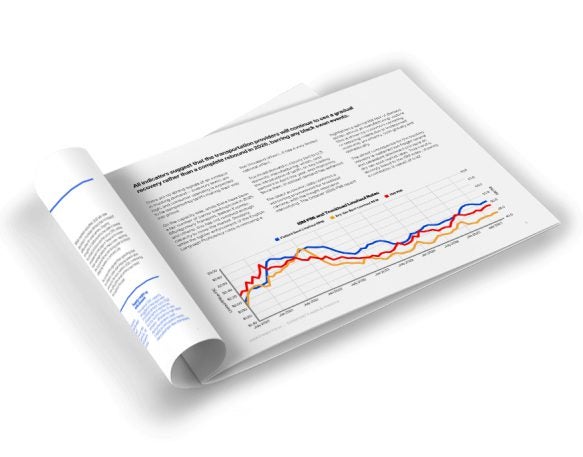Tips for Getting Accurate Freight Quotes: Navigating Freight Costs
Obtaining accurate freight quotes is essential for businesses to manage their shipping budgets effectively. Freight quotes give shippers an estimate of the shipping costs based on various factors, helping them plan and allocate resources efficiently. Accurate quotes ensure that there are no unexpected expenses, allowing businesses to maintain profitability and streamline their logistics operations.
In this article, we’ll discuss our top practical tips and strategies for businesses to obtain accurate freight quotes.
Factors influencing freight costs: Weight, distance, freight class, and accessorial charges
Freight costs are influenced by multiple factors that shippers must consider to accurately anticipate expenses and avoid budgetary surprises. Here’s an in-depth look at these key factors:
Weight
Heavier shipments typically incur higher costs due to several reasons:
- Fuel Consumption: More weight translates to higher fuel consumption, making the transportation process more expensive.
- Handling Requirements: Heavier items often require special handling equipment or more labor, increasing the overall cost.
- Transportation Limits: Some carriers have weight limits, and exceeding these can result in additional fees or the need for specialized carriers.
Distance
The distance between the pickup and delivery locations will also significantly impact freight costs:
- Fuel and Time: Longer distances require more fuel and time, both of which increase the shipping cost.
- Wear and Tear: Extended travel distances contribute to the wear and tear on the transport vehicle, often reflected in the cost.
- Regional Differences: Freight rates can vary by region due to factors like fuel prices, labor costs, and regional demand.
- Headhaul/Backhaul Dynamics: If a lane has limited backhaul opportunities, carriers may increase rates or reject tenders, raising the risk of routing guide failures and spot market premiums. Understanding these dynamics is key to accurate cost estimation.
Freight class
Freight class is a standardized classification system used in less-than-truckload (LTL) shipping that categorizes goods based on:
- Density: The space the shipment occupies in relation to its weight.
- Value: High-value items may cost more to ship due to the need for additional insurance or security measures.
- Handling Needs: Items that require special handling, such as fragile or hazardous materials, often incur higher costs.
- Stowability: The ease with which an item can be stowed and transported with other goods.
Accessorial charges
Accessorial charges are additional fees for services that go beyond standard shipping:
- Liftgate Delivery: If a shipment requires a liftgate for loading or unloading, there is usually an extra charge.
- Inside Pickup or Delivery: Delivering goods inside a building or specific location, rather than just to the curb, often results in additional fees.
- Residential Delivery: Shipments to residential areas can be more complex and costly than deliveries to commercial locations.
- Special Handling: Any extra handling requirements, such as refrigeration or hazardous material handling, will add to the cost.
Requesting quotes: Best practices for providing accurate information to carriers and brokers
When it comes to requesting freight quotes, the approach you take can vary significantly depending on whether you’re engaging in contract freight through an RFP (Request for Proposal) process or seeking spot market rates. Understanding the differences between these approaches and providing the right information is crucial for obtaining accurate and competitive quotes.
Contract freight: Focus on consistency and lane frequency
For consistent, contract freight, the RFP process is a critical tool. In this scenario, providing accurate and detailed information about lane frequency and expected volumes is essential. Carriers are more likely to offer competitive rates on lanes with predictable, consistent volumes.
Here are some key considerations:
- Lane Frequency: Clearly communicate the frequency of shipments on each lane. Lanes with regular, predictable volumes (e.g., one load per week or more) are more attractive to carriers, leading to more favorable contract rates.
- Volume Forecasting: Provide realistic volume forecasts based on historical data. While forecasting at a lane level can be challenging, accurate projections help carriers plan their capacity and pricing.
- Service Expectations: Outline any specific service requirements, such as on-time delivery performance, damage rates, or special handling needs. Clear expectations help carriers assess their ability to meet your needs and price their services accordingly.
Spot freight: Flexibility and real-time market dynamics
When dealing with spot freight, the focus shifts to flexibility and real-time market conditions. Spot rates are often influenced by factors like market volatility, demand, and the availability of backhauls. Here’s how to approach the spot market:
- Lane Characteristics: Highlight lanes that are less frequent or have inconsistent volumes. These lanes are typically best suited for spot market engagement, where carriers can offer rates based on current market conditions.
- Market Timing: Stay informed about market trends, such as the Spot Premium Ratio (SPR) and New Rate Differential (NRD), to time your spot market bids effectively. Understanding these metrics can help you anticipate rate movements and secure better pricing.
- Carrier Flexibility: Look for carriers with the flexibility to handle variable volumes and lane frequencies. In the spot market, the ability to adapt to changing conditions is key.
General best practices for both contract and spot freight
Regardless of whether you’re engaging in contract or spot freight, there are some general best practices that apply to both:
- Accurate Shipment Details: Always provide precise details about your shipment, including weight, dimensions, and freight class. Misreporting this information can lead to significant discrepancies between quoted and actual costs.
- Clear Pickup and Delivery Locations: Ensure you provide complete and accurate addresses for both pickup and delivery points. Indicate whether locations are commercial or residential, as this can impact pricing.
- Special Requirements: Communicate any special handling or delivery needs upfront, such as the need for refrigeration, specific delivery windows, or hazardous material precautions. This ensures the carrier can provide an accurate quote that includes all necessary services.
By understanding the distinctions between contract and spot freight, and applying the appropriate strategies and considerations for each, you can better navigate the freight quoting process and secure competitive rates that align with your business needs.
Negotiation strategies: Techniques for securing competitive rates and discounts
Securing competitive freight rates requires effective negotiation strategies that can significantly reduce shipping costs. Here are some key techniques to consider:
Compare multiple quotes
One of the most effective strategies is to obtain quotes from various carriers and brokers. By comparing multiple quotes, shippers can evaluate the different rates and services offered by each carrier. This approach not only helps in identifying the most cost-effective option but also provides a benchmark for negotiation. Having multiple quotes allows shippers to negotiate more confidently, as they can leverage the competitive landscape to secure better terms.
Leverage efficiencies
In truckload freight procurement, economies of scale—where increasing volume reduces cost—do not typically apply. Instead, shippers can achieve more favorable outcomes by focusing on economies of scope, which emphasize consistent network design and aligning shipments with carrier capabilities.
- Consistent Network Design: Carriers value consistency and efficiency in shipping lanes. By designing a network that clusters lanes with similar origins and destinations, shippers can create more attractive bid opportunities. For example, combining lower-volume lanes within a specific region into a larger volume for a key market area can make the lane more appealing to carriers, resulting in more competitive rates and reliable service.
- Aligning with Carrier Networks: Take a collaborative approach with carriers by aligning your capacity needs with their existing networks. Carriers are more likely to offer better rates and services on lanes that fit well within their established routes, particularly when the inbound and outbound volumes are balanced. This strategy not only helps secure lower rates but also reduces the risk of routing guide failures.
When negotiating, emphasize the efficiency and consistency of your network design rather than simply highlighting volume. This approach can lead to more sustainable, cost-effective outcomes and foster stronger, long-term relationships with carriers.
Build relationships
Establishing strong, long-term relationships with carriers can lead to preferential rates and better service. When carriers view you as a reliable and valued customer, they are more likely to offer favorable terms and go the extra mile to meet your needs.
Building these relationships involves regular communication, timely payments, and a willingness to collaborate on logistics solutions. Over time, these relationships can result in more flexible terms, priority service, and potential discounts, enhancing your overall shipping efficiency.
Understanding quote terms and conditions: Hidden fees, surcharges, and contractual obligations
Freight quotes often come with various terms and conditions that can include hidden fees and surcharges. It’s important to thoroughly understand these elements to avoid unexpected costs and ensure a smooth shipping process. Let’s take a look at how to navigate these aspects effectively.
Read the fine print
One of the most crucial steps in understanding freight quotes is to carefully review all the terms and conditions associated with them. The fine print often contains critical details about additional charges, limitations, and obligations that can significantly impact the overall cost.
By meticulously reading through these details, shippers can identify any potential hidden fees and better understand the full scope of the quote. This proactive approach helps prevent unpleasant surprises and ensures that the quoted price aligns with the final bill.
Ask for clarifications
If any fees or terms in the freight quote are unclear, it’s essential to ask the carrier or broker for detailed explanations. Ambiguities in the quote can lead to misunderstandings and unexpected expenses.
Don’t hesitate to seek clarification on specific charges, the basis for certain fees, or any contractual obligations. Clear communication with the carrier or broker helps ensure that both parties have a mutual understanding of the quote’s terms, fostering transparency and trust in the transaction.
Monitor for surcharges
Be aware of potential surcharges that could apply under certain conditions. Common surcharges include fuel surcharges, peak season fees, and charges for specific services like liftgate delivery or inside pickup. These surcharges can vary significantly depending on market conditions and the specifics of the shipment.
Monitoring these potential surcharges allows shippers to budget more accurately and avoid unexpected increases in shipping costs. Keeping track of current market trends and understanding when surcharges might apply can help in negotiating and managing these additional fees effectively.
Leveraging technology: Tools and resources for streamlining the freight quoting process
Technology can greatly enhance the freight quoting and bidding process, making it more efficient and accurate. Utilizing tools and resources, such as DAT iQ, provides significant advantages. Here’s how technology can streamline the process:
Automate quote requests
Technology allows shippers to automate the request process for freight quotes or bids, enabling them to gather multiple quotes quickly and efficiently. Automation tools can eliminate the need for manual outreach and follow-ups, ensuring shippers can compare options simultaneously, leading to better decision-making and potentially more competitive rates.
Track market rates
Staying informed about current market rates is essential for making informed shipping decisions. Real-time data on market trends helps shippers track fluctuations in freight costs, allowing them to benchmark quotes or bids against prevailing market conditions. This insight is invaluable when negotiating rates, ensuring that shippers secure fair and competitive pricing.
Analyze data
Leveraging data analytics enables shippers to gain insights into historical costs and trends, which can be crucial for budgeting and planning. Data analytics tools provide detailed information on past shipping expenses, identify patterns, and highlight areas where costs can be optimized. By analyzing this data, shippers can make more informed decisions about future shipments and develop strategies to manage expenses more effectively.
Navigating freight quotes successfully
Successfully navigating freight quotes is crucial for managing shipping costs and enhancing profitability. By understanding the factors that affect freight costs, providing accurate shipment details, and utilizing effective negotiation strategies, businesses can secure accurate and competitive freight quotes.
Additionally, leveraging technology to streamline the quoting process, focusing on consistent network design, and aligning with carrier networks can further optimize your freight procurement efforts. By implementing these strategies, businesses can ensure more reliable, cost-effective shipping operations and maintain a competitive edge in the market.
Stay Informed with DAT iQ: Your gateway to accurate freight quotes
Manage your transportation costs with precision and confidence by leveraging the latest truckload rate insights from DAT iQ. Access industry-leading analytics that empower shippers to make informed decisions, optimize shipping budgets, and navigate market fluctuations with ease. With DAT, you’ll have the tools and data necessary to enhance your logistics strategy and stay competitive in a dynamic market.




